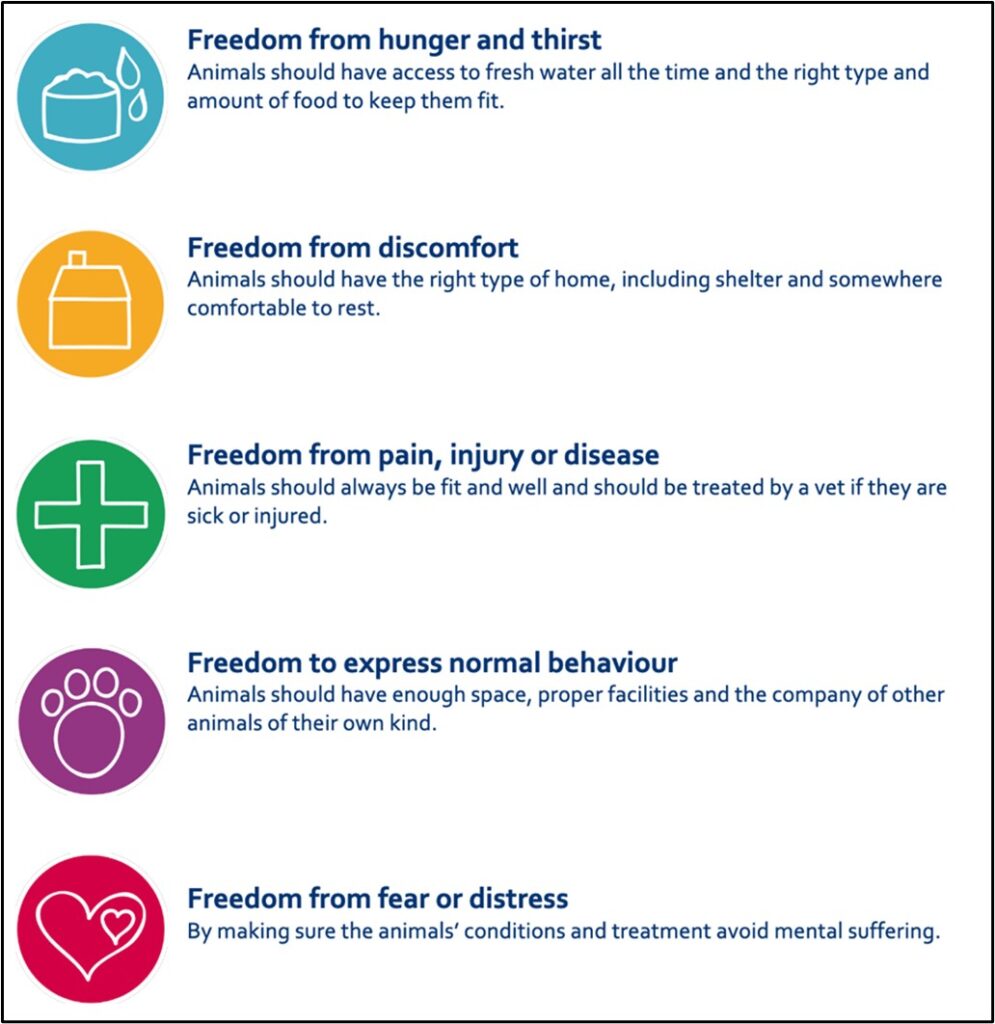5 Freedoms and the Equine Ethogram
The 5 freedoms give us a framework from which to think about welfare and assess an equines welfare situation and needs. They outline broad categories of welfare and allow us to think about how best we can provide a good welfare environment for the equines under our care.

Equine Ethogram
The equine ethogram is a species-specific list of normal behaviours for the horse. It can help us to understand the equines behavioural needs and to identify behaviours that are not normal.
Normal behaviours for horses include:
Safety
- To react to potential threats in the environment
Herd
- Living in a permanent, mixed sex herd with unlimited access to all members of the herd
Food/water
- To have 24hr access to grass/forage and water, allowing them to eat low protein, high fibre forage for up to 16hrs a day
Body care
- To be able to pass urine and faeces, roll and stretch
Sleep
- To have normal sleep patterns (horses sleep for about 15% of their day in small bursts throughout the day and need to sleep on their chest and flat out during each 24hr period
Motion
- To be able to exercise
Exploration
- To be able to explore their environment (finding food, water, shelter, rolling spots)
Companionship
- To have unlimited access to their preferred companion (horses often show a preference for particular members of the herd
Play
- To be able to play with herd members (familiar horses that they feel confident to play with)

Obviously in a domestic environment we cannot provide all aspects of an environment that provides all of the above for the horse all of the time, however it is a good list of things to consider when thinking about how we manage horses and how we interact with them.
Research has shown that equines who have access to their preferred equine companion show more positive reactions to new object being introduced to them so by modifying our environments to best suit equines we can alter their perception of the world to a more positive one.